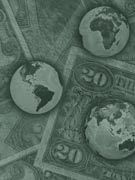Throughout this year, Latin America has remained in the shadows as attention has focused mainly on rising crude oil prices, the gradual rise in interest rates undertaken by the U.S. Federal Reserve and the emergence of China, whose economy is now so big that it is pushing up prices for primary products. Despite all these factors, however, financial markets in Latin America are experiencing a strong recovery, especially in Brazil and Mexico, where indices are at their all-time high.

Sign up to stay informed about our latest article releases.